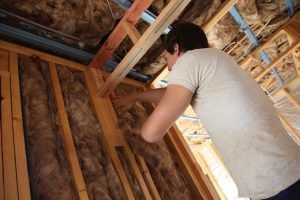
While it is important to measure the amount of insulation in your attic, the answer to the question of how many inches of insulation you should have is: It depends, according to the experts at Ambient Edge.
The amount of insulation you should have depends on:
- The type of insulation you currently have
- What your heating and cooling goals are
- How well your home is sealed
- Where in the country your home is located
That’s a lot of variables, so if you want an answer specific to your home, give us a call to schedule an appointment. We’ll assess your home insulation and make the appropriate recommendations.
What to Look For When You’re Looking at Your Attic Insulation
If you look at your current attic insulation and see it is level with or below the floor joists, you should add more, according to the EnergyStar program. While insulation levels are most accurately measured by the R-Value of a particular type of insulation, in general between 10 and 19 inches of insulation is recommended. That’s a wide range, so calling in the experts to help you assess your insulation situation is your best bet.
If you can’t see the floor joists because they are covered with insulation, but you still find your home is drafty or not achieving the comfortable temperature you’d like, you may have an air leak or even the wrong kind of insulation.
How to Determine if You Should Install More Insulation
In general, the older your home is, the more insulation you will need to install. Another big factor in choosing how much insulation you will need to install is where in the country your home is located. Your home will need insulation with a higher R-Value if you live in a cold climate, or a lower R-Value if you live in a hot climate.
How to Tell if You Need More Insulation or Better Insulation
If your home is drafty, your energy bills are high, and you believe you need more inches of insulation in your attic, that could be true. However, you may also need insulation with a higher R-Value. The higher the R-Value, the better the insulation can do its job of resisting heat flow.
Your home may benefit from multiple types of insulation as well. For instance, a layer of insulating foam or board with fiberglass or blown-in insulation over it may be a better option than simply piling up batts (or rolls) of insulation.
From batts and boards to slag wool and spray foam, there are many different types of insulation. Each type provides a different R-Value, as well as has a variety of pros and cons for your unique space. In general, the higher the R-Value, the better it insulates but also the more expensive it usually is to both purchase and install.
We Can Help You Assess Your Insulation Situation
The licensed, certified insulation experts at Ambient Edge will look at your attic space to gauge the insulation levels and if you need to add more insulation. The Ambient Edge team has the knowledge and expertise to help you find the insulation solution that works best for you and your home. Call or send us a message today to schedule an estimate.



